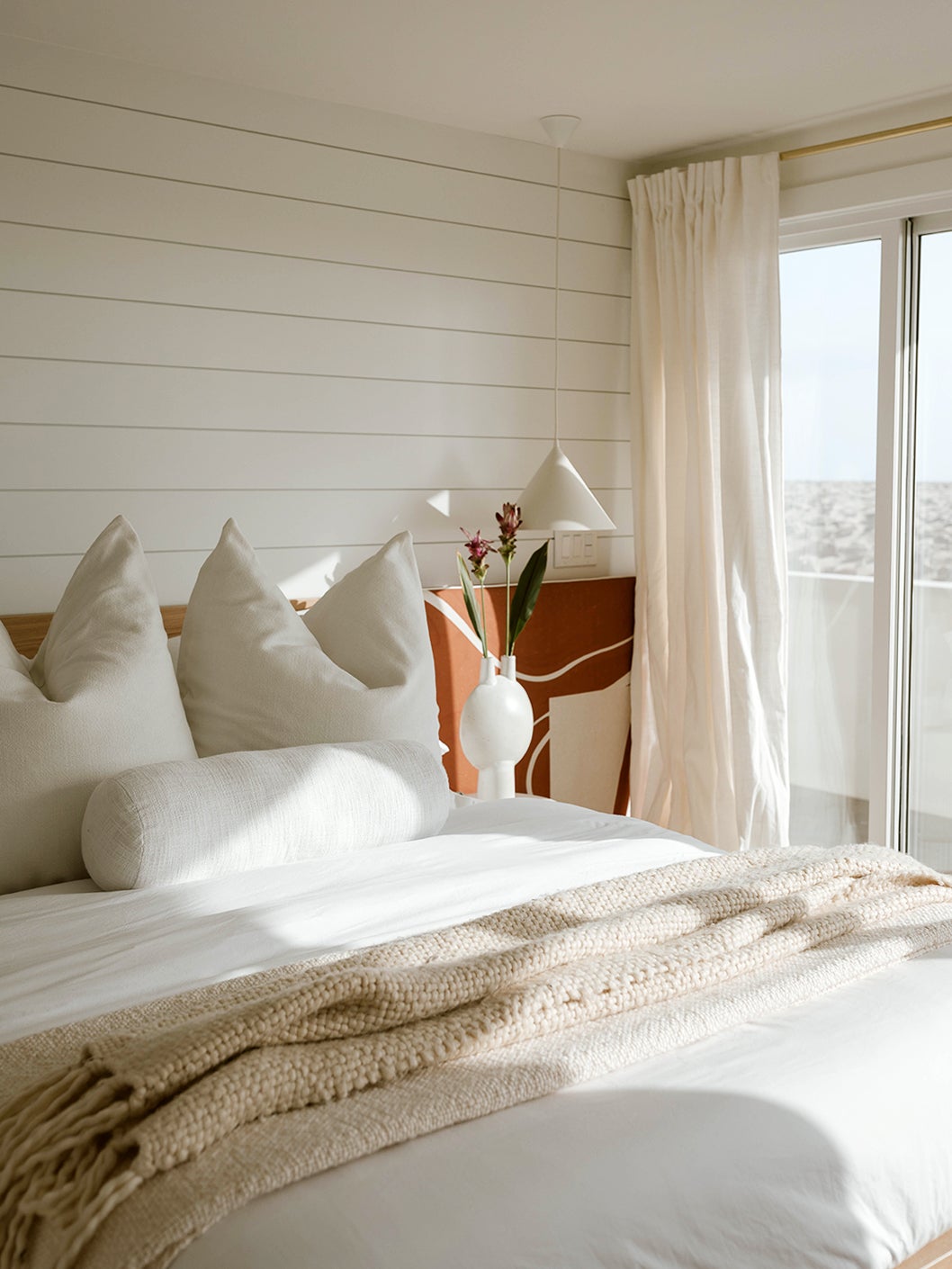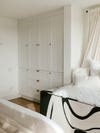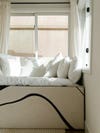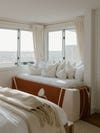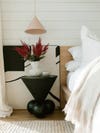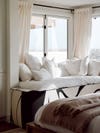Slumber Party Overflow Is No Match for This Home’s Clever Double-Bed Setup
When you don’t want a bunk or pull-out sofa.
Published Apr 28, 2022 1:40 AM
We may earn revenue from the products available on this page and participate in affiliate programs.
When you get down to it, sleeping bags, bunk beds, and pull-out sofas all really amount to the same thing: slumber party overflow. And while it’s true that most kids don’t care too much about where they rest their heads at night—a hard floor or a springy mattress is fine by them—none of the aforementioned options are super aesthetically pleasing. Plus if your visitors consist mostly of adults, they literally come up short. This was the dilemma designer Jess Diab faced when outfitting a Ventura, California, beach home for clients with a big, kid-filled extended family. “Their top wish was to be able to house as many people as they could fit,” explains Diab.
Tasked with maxing out the bed setup in both of the two guest bedrooms, Diab started by researching sleeper sofas. But it didn’t take long before she realized that given the funky placement of the windows in the corners and how much square footage the closets took up, a typical, 87-inch-long, three-seater couch wasn’t going to cut it. “Plus they’re so expensive because of the pull-out mechanism,” notes Diab. Her fix? A custom twin XL bed nook that would double as a snooze spot by night and a reading–slash–lounging area by day.
Diab started simply by putting a box spring and a mattress in each corner of the two bedrooms, right by the windows where the light streams in. “But it just looked weird,” she says. At that stage of the project, the designer had already created a bespoke headboard for the main beds (essentially, she sandwiched an IKEA Malm bed in between two cushions upholstered in graphic Drop It Modern fabric). So using the same coordinating textiles she used on the main headboards, Diab devised an upholstered L-shape border to go around the twin-size structures. “This way, it looked built in,” she notes. She made sure that the framework was built out of solid wood so big kids and teenagers alike could crawl up onto it and lean against the edge without worrying about bending the parts.
While the two custom solutions came out to about $1,500 each—the same amount Diab was seeing most basic-looking sleeper sofas go for—she made up for the expense by purchasing budget-friendly nightstands and upgrading them on her own. The one in the darker bedroom, for instance, ran her a mere $100 and was previously a tacky gold hue (she spray-painted it black). “It’s like a 3D version of the headboard pattern,” she says. Dream on.
